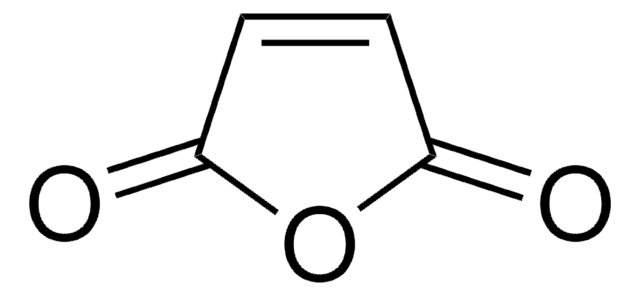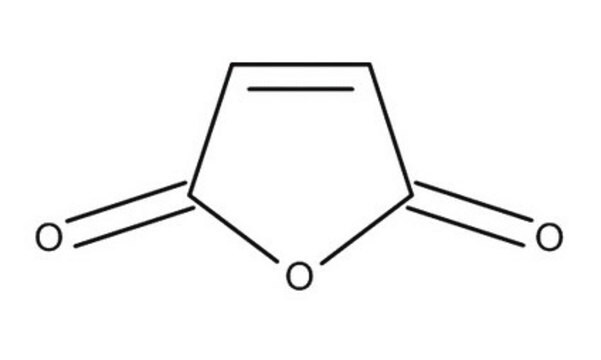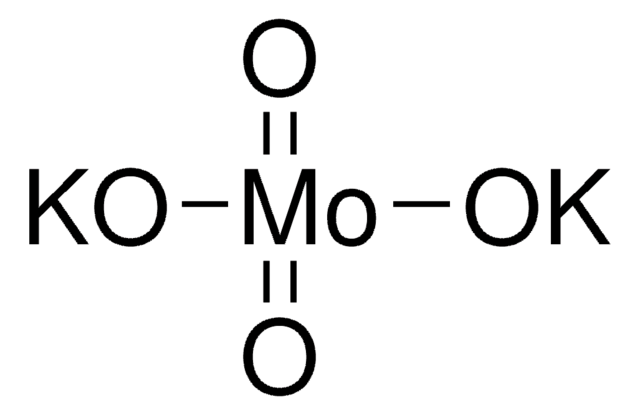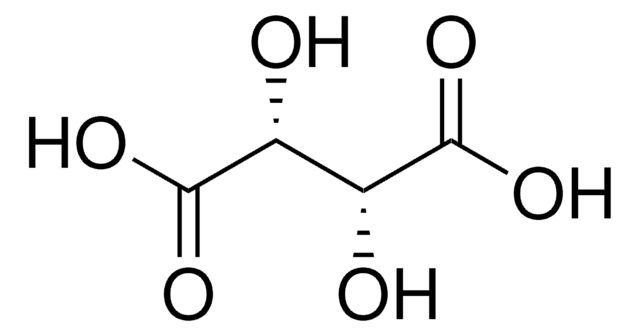400904
Lithium molybdate
99.9% trace metals basis
Synonym(s):
Dilithium dioxido(dioxo)molybdenum, Lithium Molybdate(VI), Lithium Molybdenum Oxide, Lithium metamolybdate
About This Item
Recommended Products
Quality Level
Assay
99.9% trace metals basis
form
powder or crystals
reaction suitability
reagent type: catalyst
core: molybdenum
greener alternative product characteristics
Design for Energy Efficiency
Learn more about the Principles of Green Chemistry.
sustainability
Greener Alternative Product
impurities
≤1500.0 ppm Trace Metal Analysis
density
2.66 g/mL at 25 °C (lit.)
greener alternative category
, Enabling
SMILES string
[Li+].[Li+].[O-][Mo]([O-])(=O)=O
InChI
1S/2Li.Mo.4O/q2*+1;;;;2*-1
InChI key
NMHMDUCCVHOJQI-UHFFFAOYSA-N
General description
Application
Signal Word
Warning
Hazard Statements
Precautionary Statements
Hazard Classifications
Eye Irrit. 2 - Skin Irrit. 2 - STOT SE 3
Target Organs
Respiratory system
Storage Class Code
13 - Non Combustible Solids
WGK
WGK 1
Flash Point(F)
Not applicable
Flash Point(C)
Not applicable
Personal Protective Equipment
Choose from one of the most recent versions:
Already Own This Product?
Find documentation for the products that you have recently purchased in the Document Library.
Articles
Nanomaterials for Energy Storage in Lithium-ion Battery Applications
Increasing fuel costs and concerns about greenhouse gas emissions have spurred the growth in sales of hybrid electric vehicles (HEVs) that carry a battery pack to supplement the performance of the internal combustion engine (ICE).
Professor Qiao’s laboratory lays out recent advances in conversion type lithium metal fluoride batteries. This review explores key concepts in developing electrochemically stable microstructures for wide Li-ion insertion channels.
Lithium-ion batteries (LIBs) have been widely adopted as the most promising portable energy source in electronic devices because of their high working voltage, high energy density, and good cyclic performance.
Our team of scientists has experience in all areas of research including Life Science, Material Science, Chemical Synthesis, Chromatography, Analytical and many others.
Contact Technical Service









